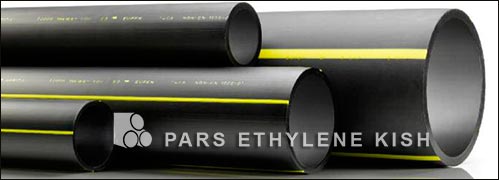
POLYETHYLENE GAS PIPE
Polyethylene gas pipe systems are specifically engineered and certified for use underground outside of buildings. Unlike above-grade gas piping installations that require metallic piping, underground systems need to perform in harsh and corrosive environments, where metallic pipe requires additional and costly cathodic protection systems to protect the pipe. With continuous lengths of corrosion proof, flexible piping, simple assembly, and the lowest installed cost compared to other underground gas piping material, PE is by far the most common material for this application, with nearly universal use.
System Application and Material Usage
PE gas pipe is manufactured according to ASTM D 2513 and is available in common sizes such as 1/2” CTS (copper tube size), 3/4” IPS (iron pipe size), 1” CTS, 1” IPS, 1-1/4” IPS and 2” IPS and is for installation outside, u nderground only. Polyethylene (PE) is not approved for indoor use or for encasement in concrete slabs.
nderground only. Polyethylene (PE) is not approved for indoor use or for encasement in concrete slabs.
Underground gas pipe should be installed with sufficient clearance from any other underground structure to avoid contact, to allow for maintenance, and to protect against damage from proximity to other structures. In addition, underground plastic pipe should be installed with sufficient clearance to be insulated from any heat source to prevent impairing the serviceability and reliability of the pipe.
Careful attention should be paid to layout, minimum bending radius, and routing to prevent excessive stressing of the piping where there is heavy vehicular traffic, or where soil conditions are unstable and settling of piping could occur. ABS or PVC piping may be used as sleeving for additional protection.
Piping should be protected from physical damage where it passes through flowerbeds, shrub beds, and any other such cultivated areas where such damage is reasonably expected.
Install polyethylene piping so as to minimize thrust forces caused by expansion and contraction of the piping. Typical polyethylene piping will expand or contract 1 inch for every 10°F temperature change for every 100 feet of pipe.
Bury or cover pipe in graded trenches with a minimum 12 inche s of coverage, or install in a conduit or other shield to protect the piping from physical damage. If flooding the trench to consolidate the backfill, do not allow the pipe to float from its firm bearing on the trench bottom.
s of coverage, or install in a conduit or other shield to protect the piping from physical damage. If flooding the trench to consolidate the backfill, do not allow the pipe to float from its firm bearing on the trench bottom.
To facilitate locating, bury an electrically continuous corrosion-resistant tracer wire (minimum AWG 14) or magnetic tape with the polyethylene pipe. Bring one end above ground at a building wall or riser. The wire or tape should not be in direct contact with the polyethylene pipe.
PE pipe used for fuel gas is typically joined with heat fusion, electro-fusion, or mechanical couplings that are specifically designed for use with PE pipe that use an insert stiffener and offer full restraint of the PE pipe.
Source: http://opus.mcerf.org
Valve | PEX pipe | Push fit system | Plastic pipe | HDPE pipe | Water pipe
UPVC pipe | Spiral pipe | Gas pipe | Underground pipe | Polyethylene pipe fitting | Pipe installation